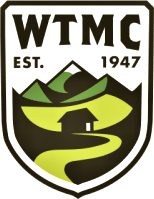- This topic has 0 replies, 1 voice, and was last updated 6 years, 7 months ago by henry fisher.
-
AuthorPosts
-
-
henry fisherGuest
Kia ora koutou
At the recent Alpine club talk we touched on what boots you might need for alpine ALP-1 trips. I was not very keen to discuss it in detail at the end of the talk, and this is because it is quite a big subject.
My biggest concerns are :1. For a lot of ALP-1 trips there is a fair bit of regular tramping to do before you get to the alpine environment. Having specific alpine boots on for the whole time can be very uncomfortable, and can ruin your boots too.
2. Alpine-specific boots are expensive, and this cost can limit people getting into the alpine environment, when actually they might be able to do what they need to do if they already have good stiff high-topped tramping boots, with good soles. We don’t want you to have the most splendid gear, and then not be able to afford to come on any trips!
So, here’s a post to hopefully help you out, whether you’re thinking of taking a Snowcraft course, or are already skilled and just wanting to upgrade your all-year-round tramping boots.
Footwear is always a big discussion point, because of price but also because of what we are all used to using and wearing, and our different thresholds for (dis)comfort.
The more alpine stuff I do, the more seriously I think about my feet, and the more I realise how important having warm and happy feet (but not always dry) is for the whole trip – risk-mitigation, comfort, stamina, pleasure … everything.Product descriptions can be misleading. I’ve recently seen some very soft boots described as ‘crampon-ready’ or ‘crampon-compatible’. Just because strap-on crampons can be fitted to almost any footwear (including bare feet!!), it doesn’t mean that that’s an appropriate thing to do. Alpine techniques such as ‘front-pointing’ and traversing can be very hard work, and so stiff boots are worth every penny at those times.
Crampons can also ruin soft boots, by causing them to fall apart at the seams very quickly.Shop assistants can be misleading. Some are super experienced and are a great resource, and some may have never been outdoors before – it can be difficult to tell who is who. I know a few people who have changed their minds after advice they’ve received in a shop, and have made an expensive mistake.
Comfort is very important. All our feet are different, and so your choice always needs to be a personal one. Alpine movement is tough on the feet – way more than regular tramping. If you keep doing it you’ll get very strong feet, but having decent stiff boots will help you a great deal whatever the level of trip you’re on.
Boots appropriate for ALP-1 trips are often the same boots used by more advanced trampers, which is what you’re becoming as a WTMC member, if you’re not already there!
Therefore, this could be an opportunity to upgrade your boots for all-year use, but that needs to be your decision.Important alpine boot features include :
– stiffness through the sole – you shouldn’t be able to bend the toes up too much.
– robust rubber – scree, rock, ice & snow is hard on the soles, so you need durable rubber.
– hard square-edged soles (not rounded edges) – using the edges of your boots is a very important movement technique.
– high tops for ankle support – your ankles will need help & protection.
– good toe and heel rands – this is the rubber capping bit that protects your boot and your foot.
– a level of water resistance – they don’t have to be totally water-proof (this can add a lot of extra cost) but it is nice to have. I often end up with my feet in plastic bags anyway, as a big day out in snow is going to have an effect on any boot.Thermal insulation is a bonus, but if they’re your all-year everything boots then summers will be tough and smelly!
I hope this helps – remember these are just my opinions from experience, and you know your own feet the best.
Looking forward to seeing you out there … for extreme tea & biscuits.
henry
-
-
AuthorPosts
